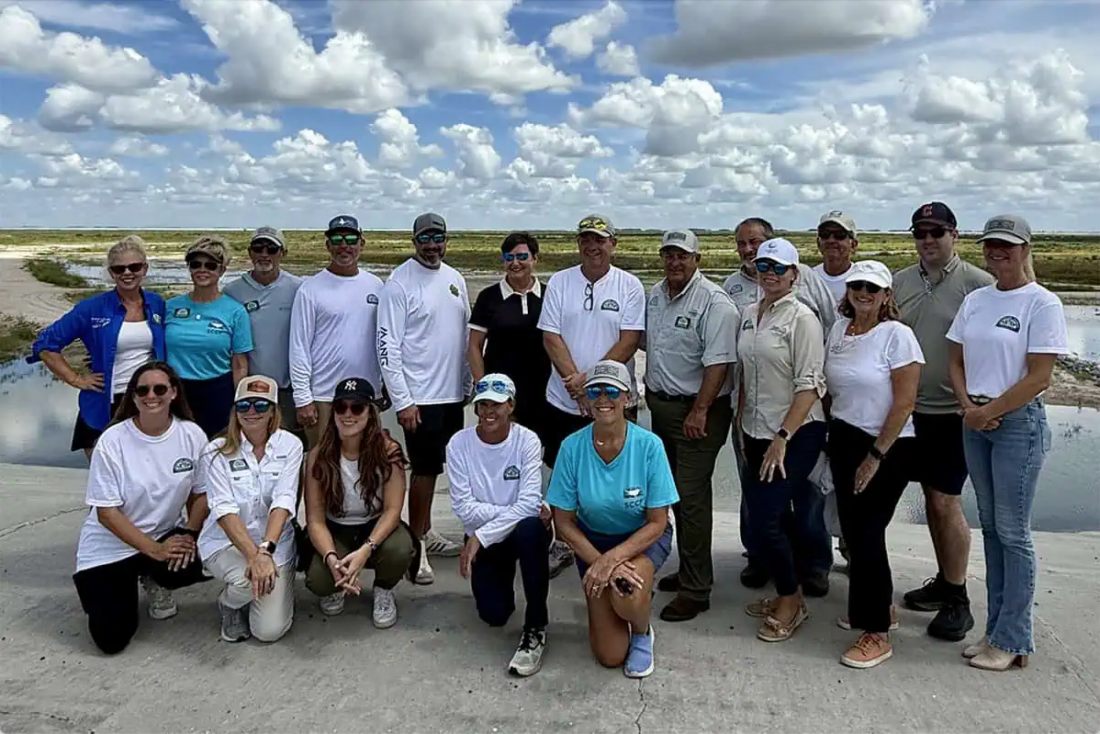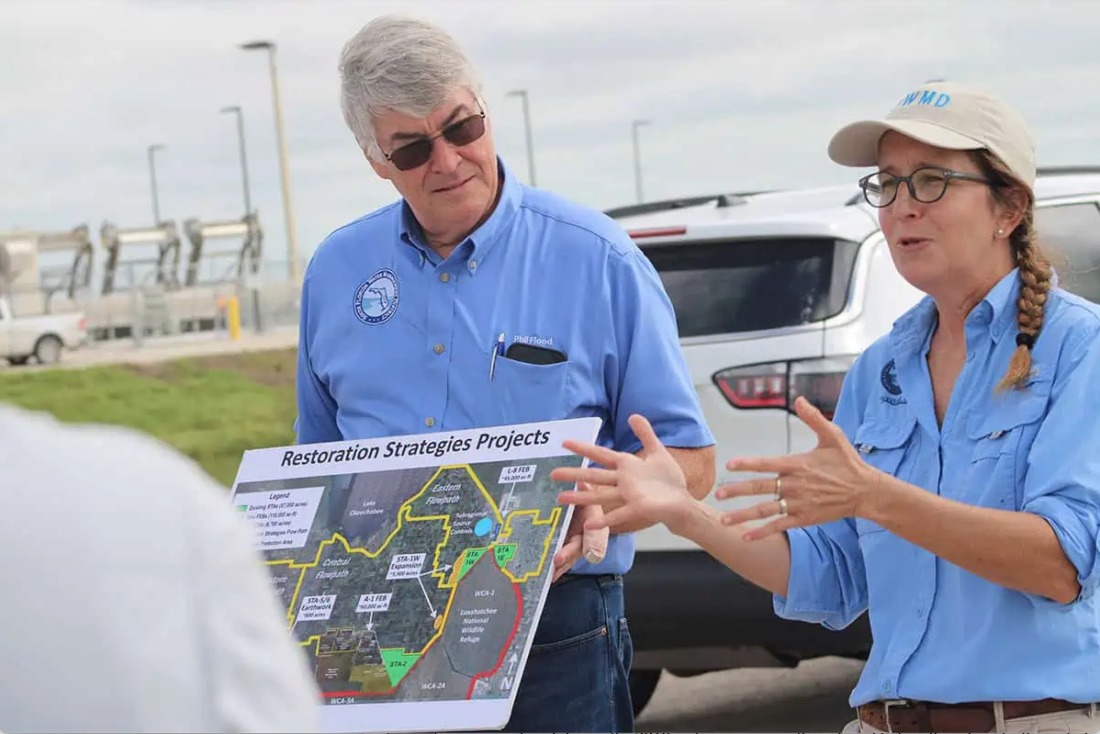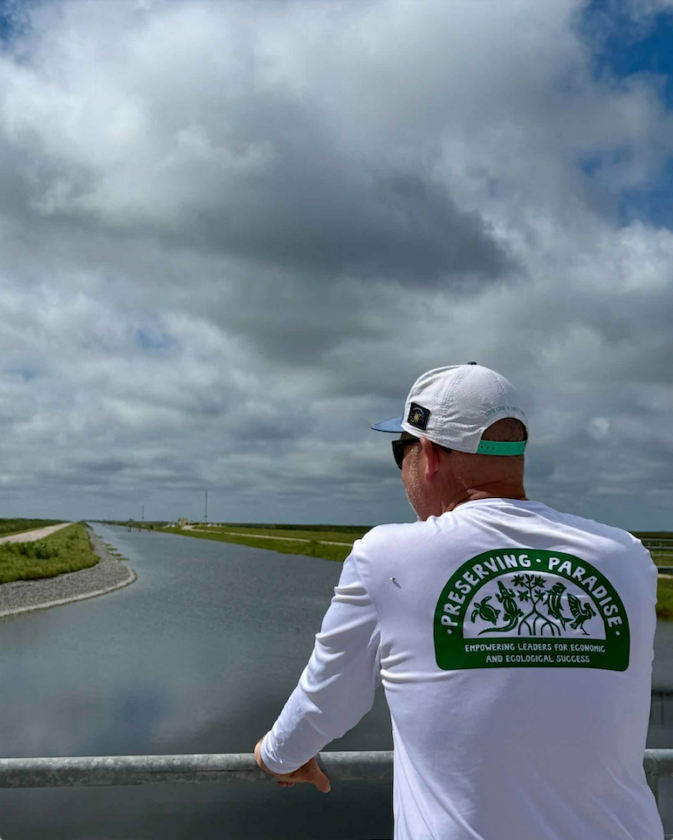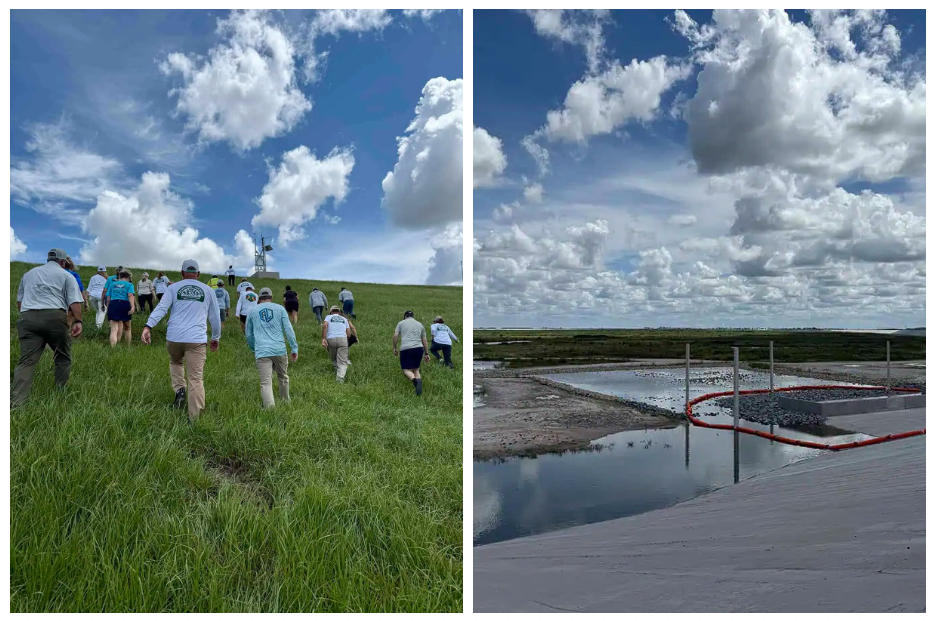Preserving Paradise ventures to EAA, C-43 reservoirs
On Sept. 2, the 2025 Preserving Paradise cohort ventured into the field for their first experiential learning course, which focused on Everglades restoration.
Preserving Paradise is a collaborative initiative between Captains for Clean Water, the SanCap Chamber, Sanibel-Captiva Conservation Foundation (SCCF) and The Everglades Foundation to engage business leaders in water quality advocacy through classroom sessions, panels and group discussions, and in-the-field experiences.
This year’s third session brought participants to the Everglades Agricultural Area (EAA) Reservoir and Caloosahatchee River (C-43) West Basin Storage Reservoir — two critical projects in the Comprehensive Everglades Restoration Plan for reducing harmful water quality events in South Florida. They had the chance to view the reservoirs up close after learning about their importance for water quality, thanks to presentations from leaders in the construction of the projects.
“Watching our Preserving Paradise class engage with these water quality projects first-hand is when we see true learning take place. It’s one thing to learn about a reservoir from a sheet of paper but a completely different experience to see it in person,” SCCF Policy Associate Allie Pecenka said. “Visiting the sites allows you to understand the enormous scale of these projects and how much water they will be handling. It’s so exciting to see our business community learn the nuances of water quality and management in order to become stronger advocates for our ecosystems and our economies.”
EAA RESERVOIR
The first stop of the day was the EAA Reservoir — referred to by many as the “crown jewel of Everglades restoration.” It is being constructed to store, treat and send clean water south into the Everglades and Florida Bay, where it is needed.
Construction of the reservoir and its associated Stormwater Treatment Area (STA) is a joint initiative between the U.S. Army Corps of Engineers and South Florida Water Management District (SFWMD). The Army Corps is responsible for the building of the reservoir, while the SFWMD is responsible for the constructed wetland and canal improvements.
Once completed, the reservoir will have the capacity to store 78 billion gallons of water and lower levels in Lake Okeechobee by approximately 6 inches — improving the health of the lake’s ecology and reducing the need for damaging seasonal discharges to the coasts and Lake Worth Lagoon. The stored water will be filtered by the reservoir’s 6,500-acre STA, which will provide needed freshwater to the Everglades and Florida Bay.
C-43 RESERVOIR
The second stop on the tour was the recently completed C-43 West Basin Storage Reservoir, a key water storage project for the local watershed in Southwest Florida. Another major component of the Comprehensive Everglades Restoration Plan, its primary function is to provide water storage to support healthy salinity levels in the Caloosahatchee Estuary.
Participants took part in a walking tour and presentation by Phil Flood from the SFWMD, then viewed the pump station and construction being finalized firsthand.
With 55 billion gallons of water storage, the project will manage excess watershed runoff and Lake Okeechobee releases in the wet season, while ensuring there is enough freshwater to maintain necessary salinities in the dry season. The completed footprint also features 15 miles of perimeter canals, 14 major water control structures and 19 miles of dam embankments.
“Participants headed home from these tours with a heightened understanding of the vast scale of Everglades restoration projects and their critical importance to improving our water quality locally and statewide,” Pecenka said.
The Preserving Paradise program will feature three more sessions through October.
For more information, visit https://sanibel-captiva.org/preserving-paradise/.






